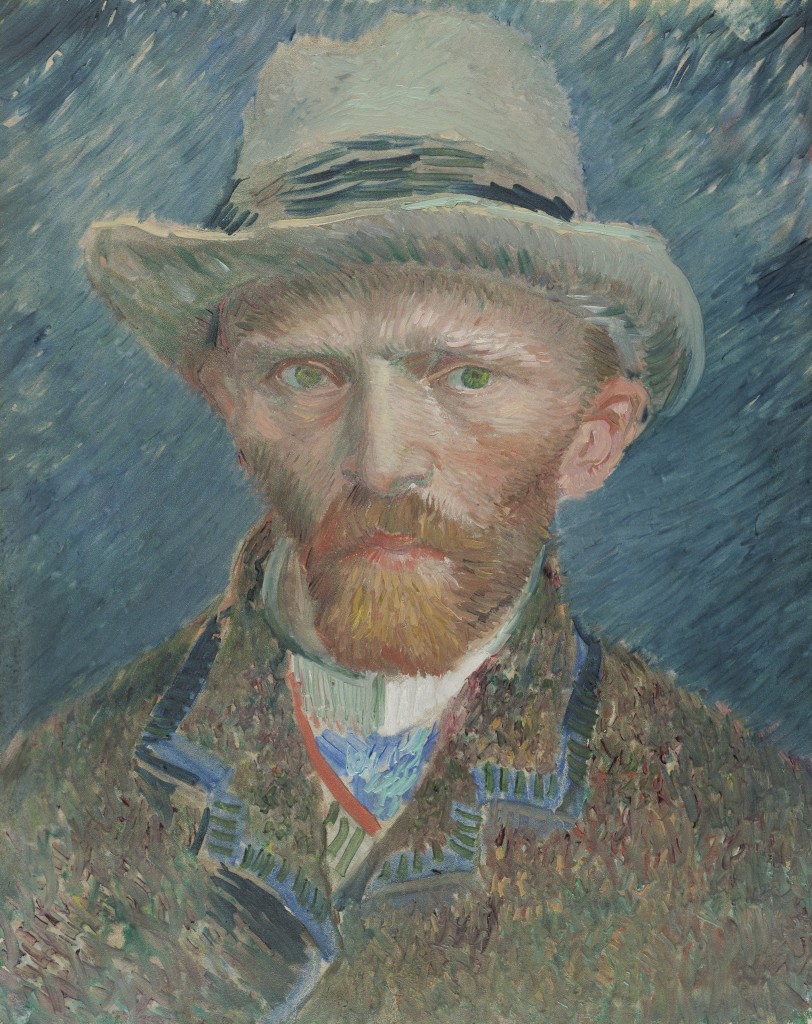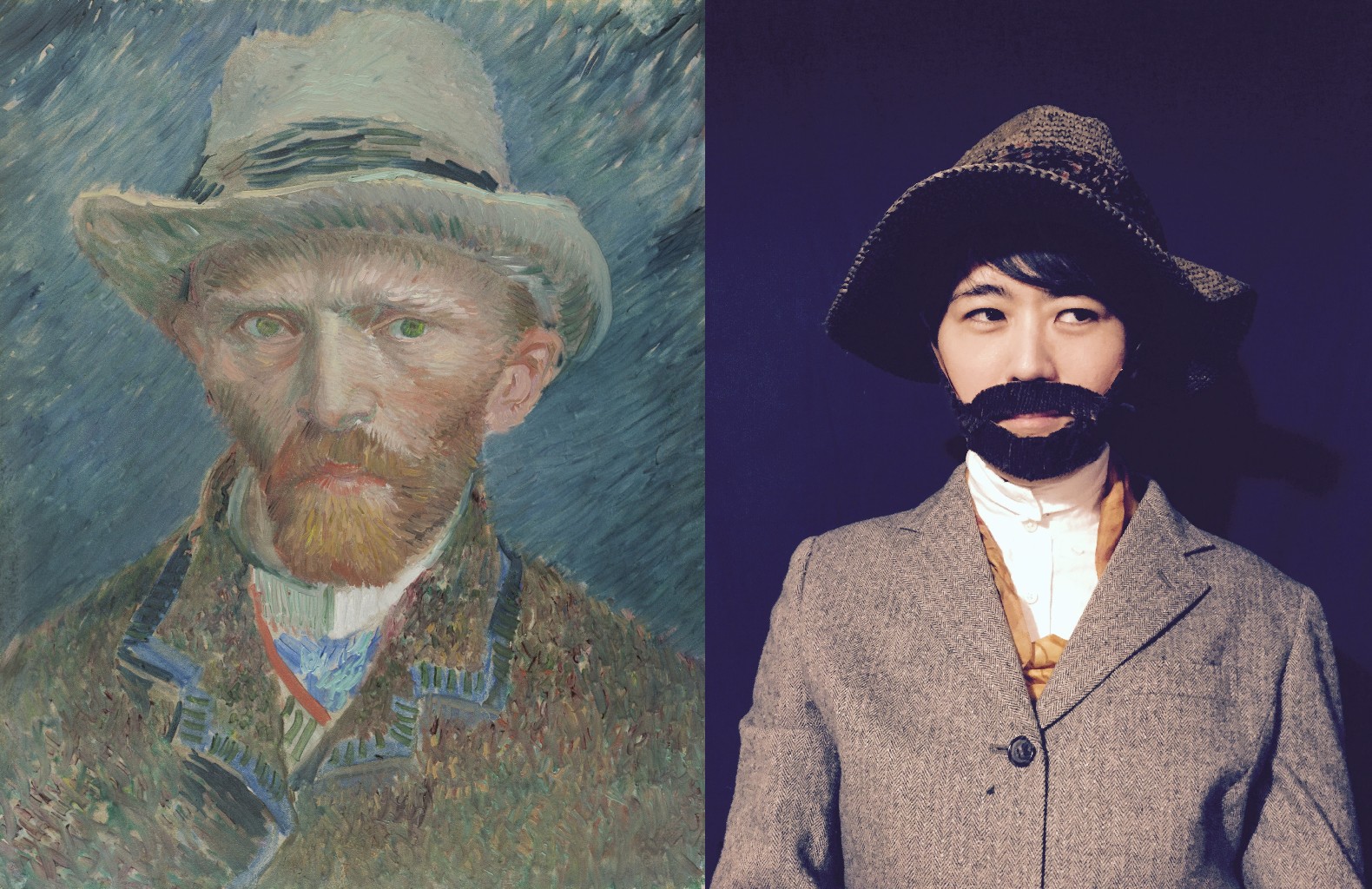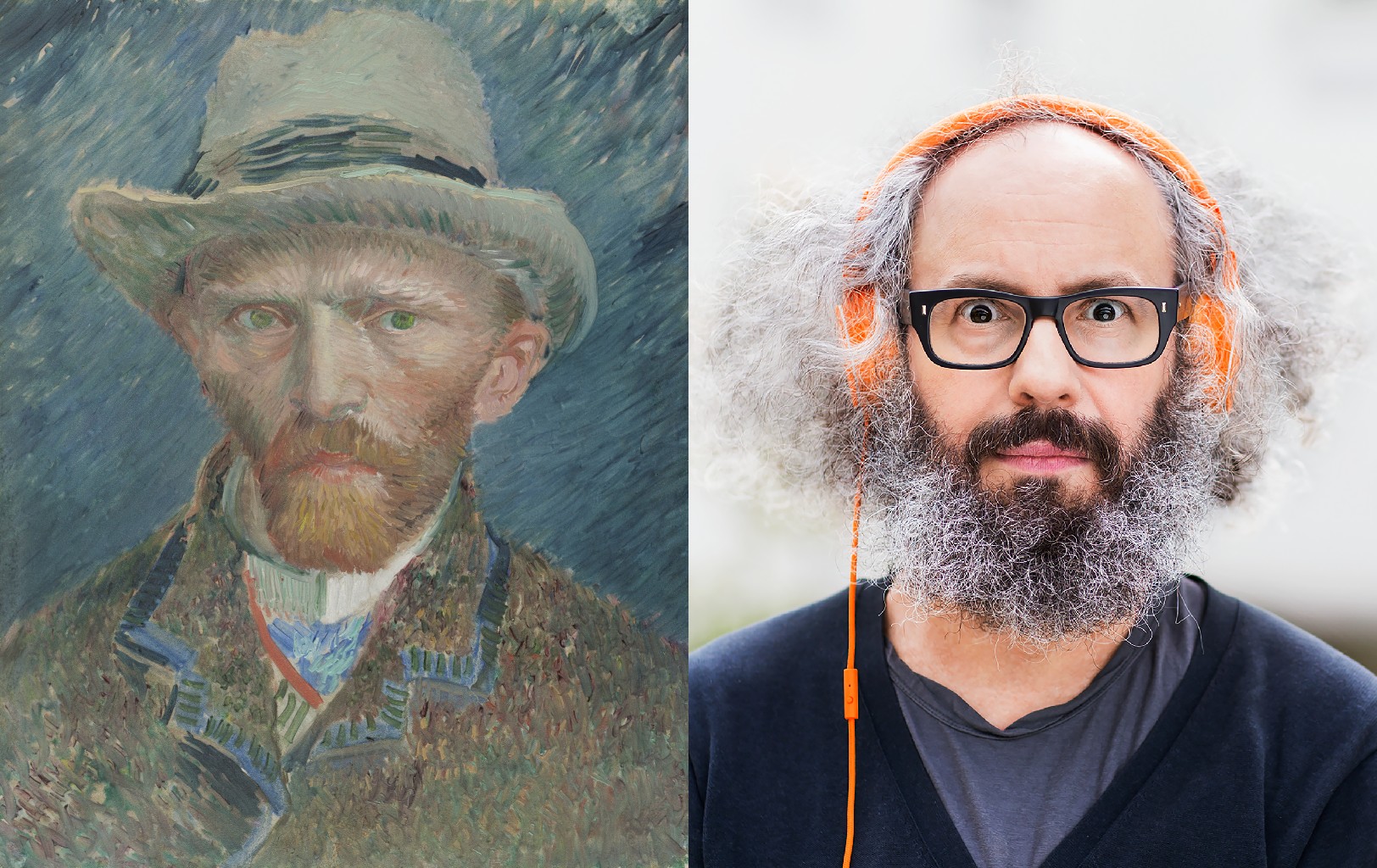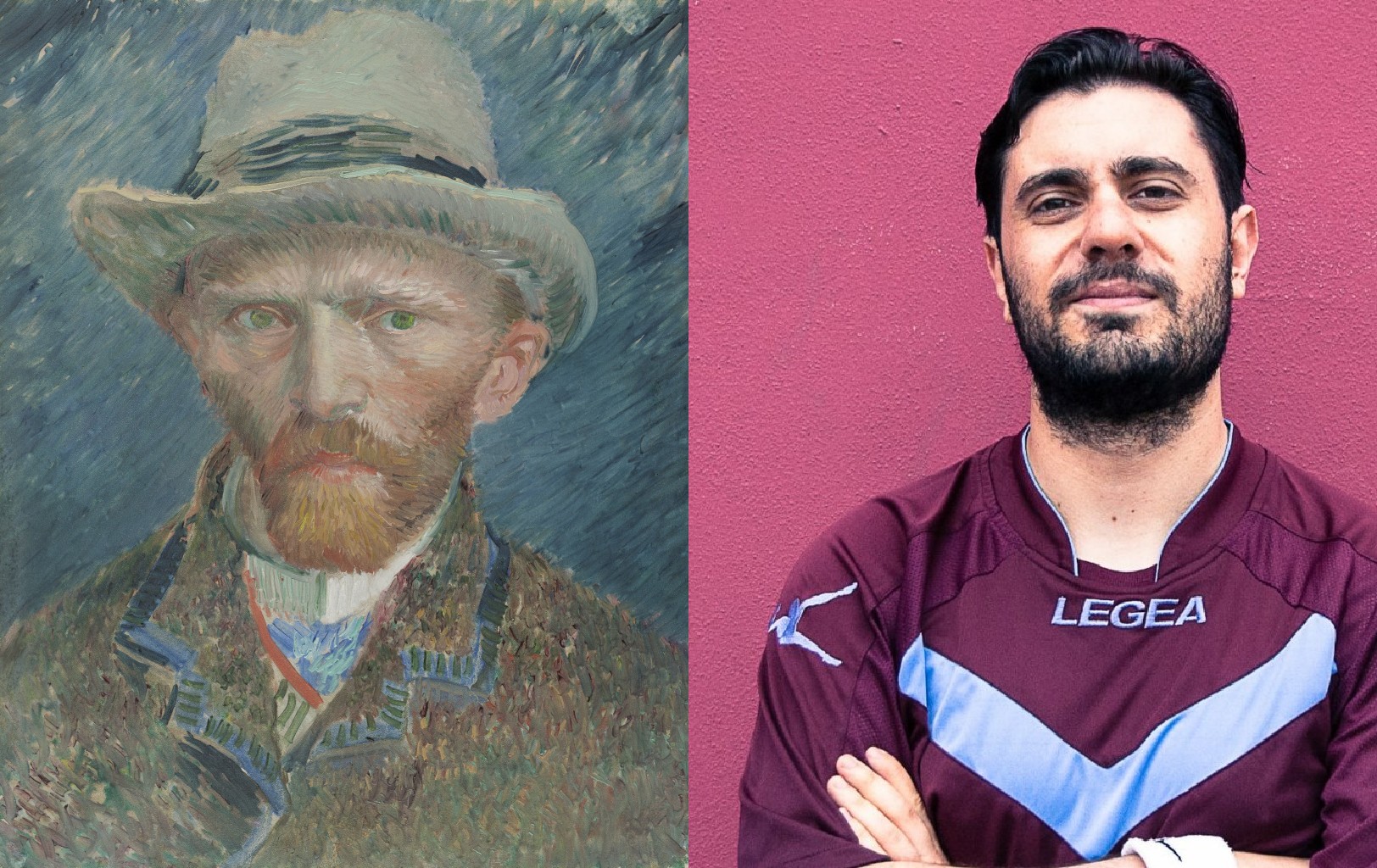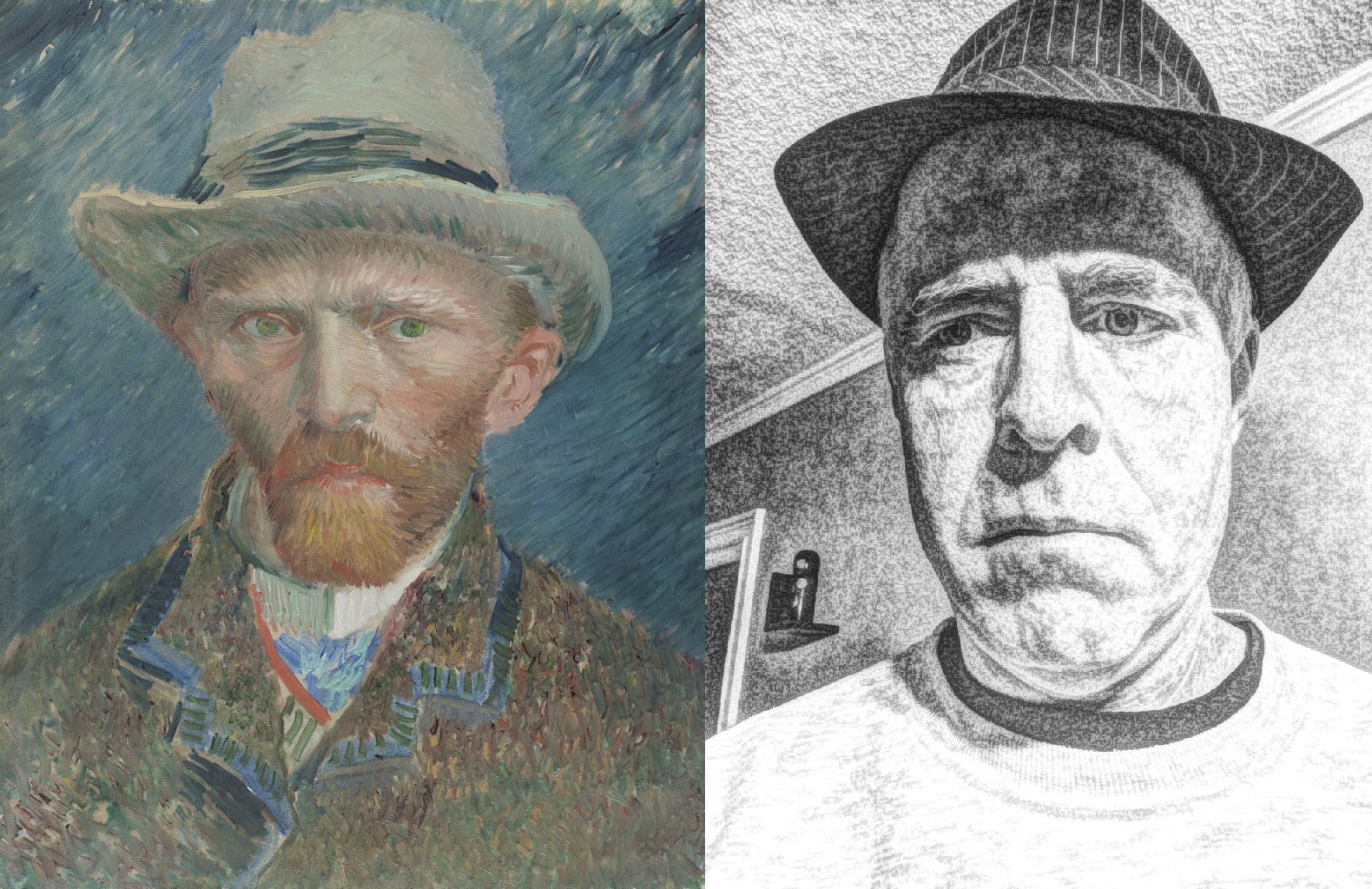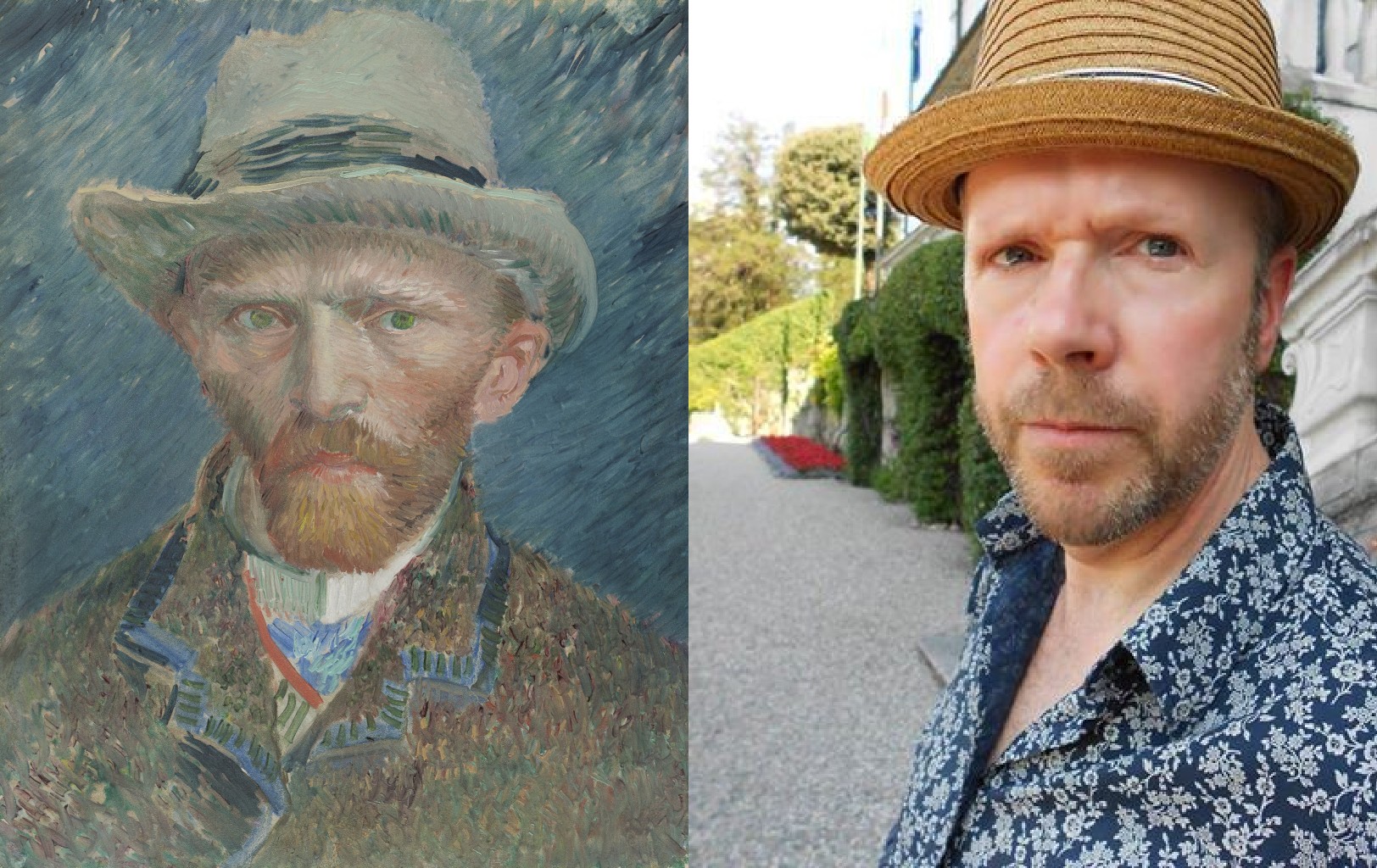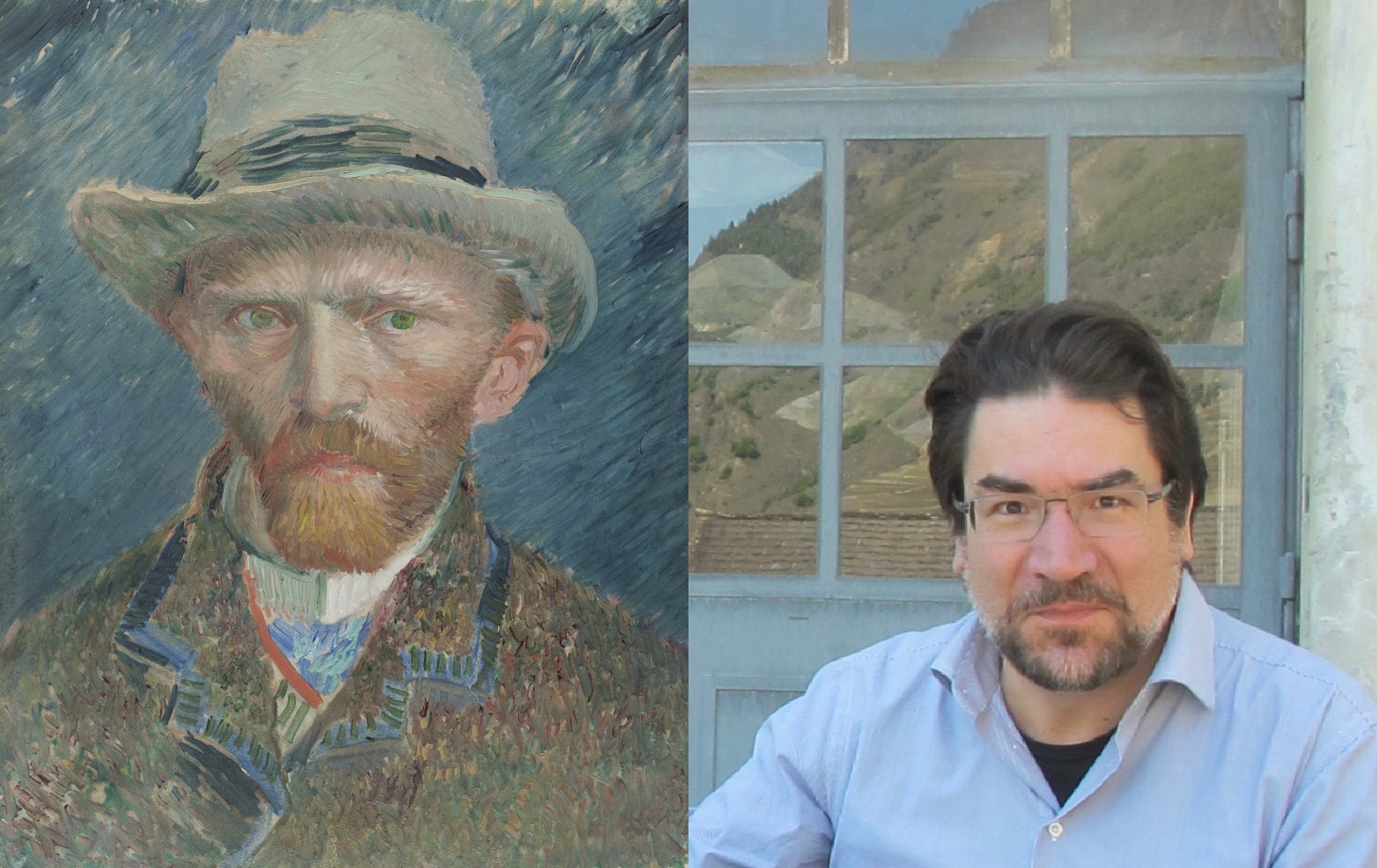By: Vincent van Gogh (1853-1890)
Created: 1887, Collection: Rijksmuseum Amsterdam, Amsterdam, Netherlands Rights: Public Domain
Of course, a hat is mandatory for this picture. But maybe you are no ginger type? Or you don't have a beard? Then just use props, wigs or paint! Watch out for a plain background, too.
Vincent Willem van Gogh was a post-Impressionist painter of Dutch origin whose work, notable for its rough beauty, emotional honesty and bold color, had a far-reaching influence on 20th-century art.
Vincent moved to Paris in 1886, after hearing from his brother Theo about the new colorful style of French painting. Wasting no time, he tried it out in several self-portraits. He did this mostly to avoid having to pay for a model. Using rhythmic brushstrokes in striking colours, he portrayed himself here as a fashionably dressed Parisian.
In just over a decade, he produced more than 2,100 artworks, consisting of 860 oil paintings and more than 1,300 watercolors, drawings, sketches and prints. His work included self portraits, landscapes, still lifes, portraits and paintings of cypresses, wheat fields and sunflowers.
After years of painful anxiety and frequent bouts of mental illness, he died aged 37 from a gunshot wound, generally accepted to be self-inflicted (although no gun was ever found). His work was then known to only a handful of people and appreciated by fewer still.
The extent to which his mental health affected his painting has been a subject of speculation since his death. Despite a widespread tendency to romanticize his ill health, modern critics see an artist deeply frustrated by the inactivity and incoherence brought about by his bouts of illness. According to art critic Robert Hughes, Van Gogh’s late works show an artist at the height of his ability, completely in control and “longing for concision and grace.”
Sources for the description: Wikipedia, Rijksmuseum
